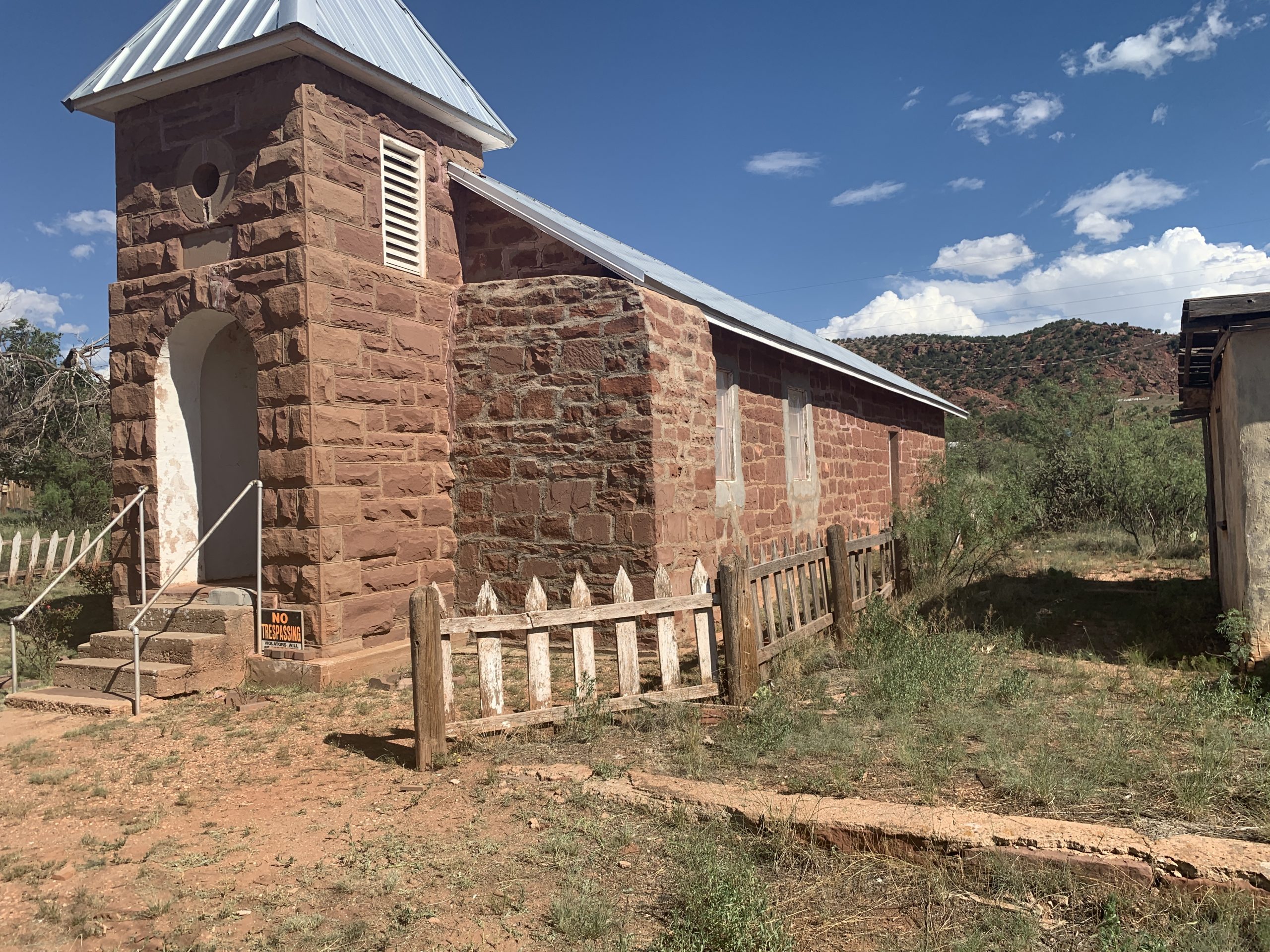
The Catholic Church
Many people here told me New Mexico is full of ghost towns, and I have always wanted to explore one myself. I did a Google search, decided I’d start with one easy to get to, and chose Cuervo.
If you’ve been following along with me as I explore New Mexico, you’ll recall I had my Jeep break down outside Tucumcari.
Not wanting anything to do with a car payment right now, I bought a used car whose air conditioning decided to quit the day I needed to do a few hours of driving in 98 degree heat. “At least,” I thought bemusedly, “it’s more historic this way. They didn’t have air conditioning over a hundred years ago, and now I can get the full experience.” (har, har)
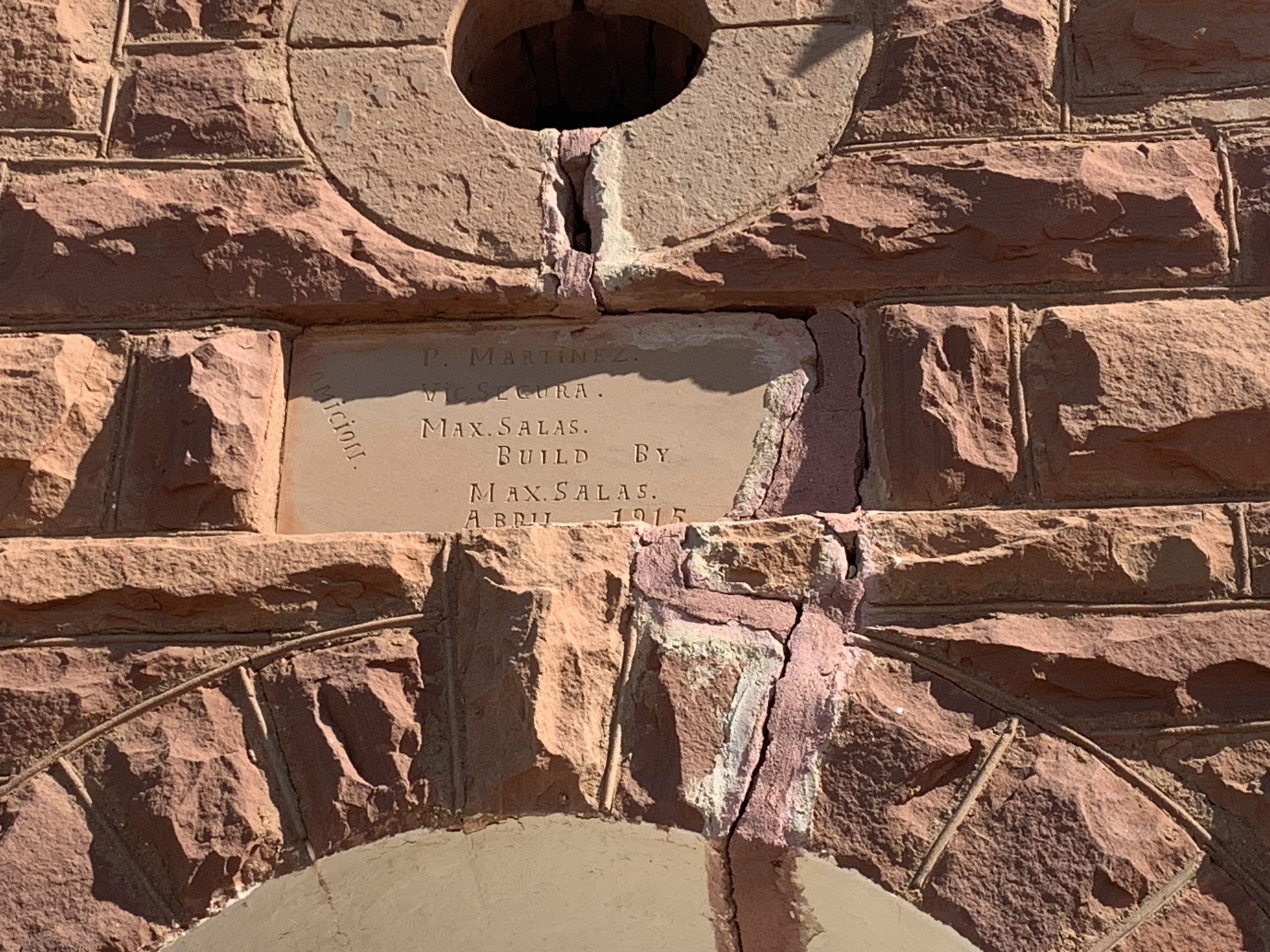
Dedication above Church Door, 1915
As I headed east on I-40, the temperature rose and, despite having both windows down, it was hot, New Mexico. Real hot. As I kept cruising east, I thought, “I’m not doing this again until the A/C is fixed, what was I thi…oh, look, there it is.”
“The breeze felt like the hot air coming from an oven when you open the door while the rocky dirt under my boots crunched as I walked down the unpaved street and turned a corner.”
Off the highway, I saw a ruined building. Without a doubt, Cuervo is the easiest ghost town to get to — when I-40 came through here, part of the town was buried by highway construction. There is no real reason to stop in Cuervo now, but I eagerly pulled off the highway.
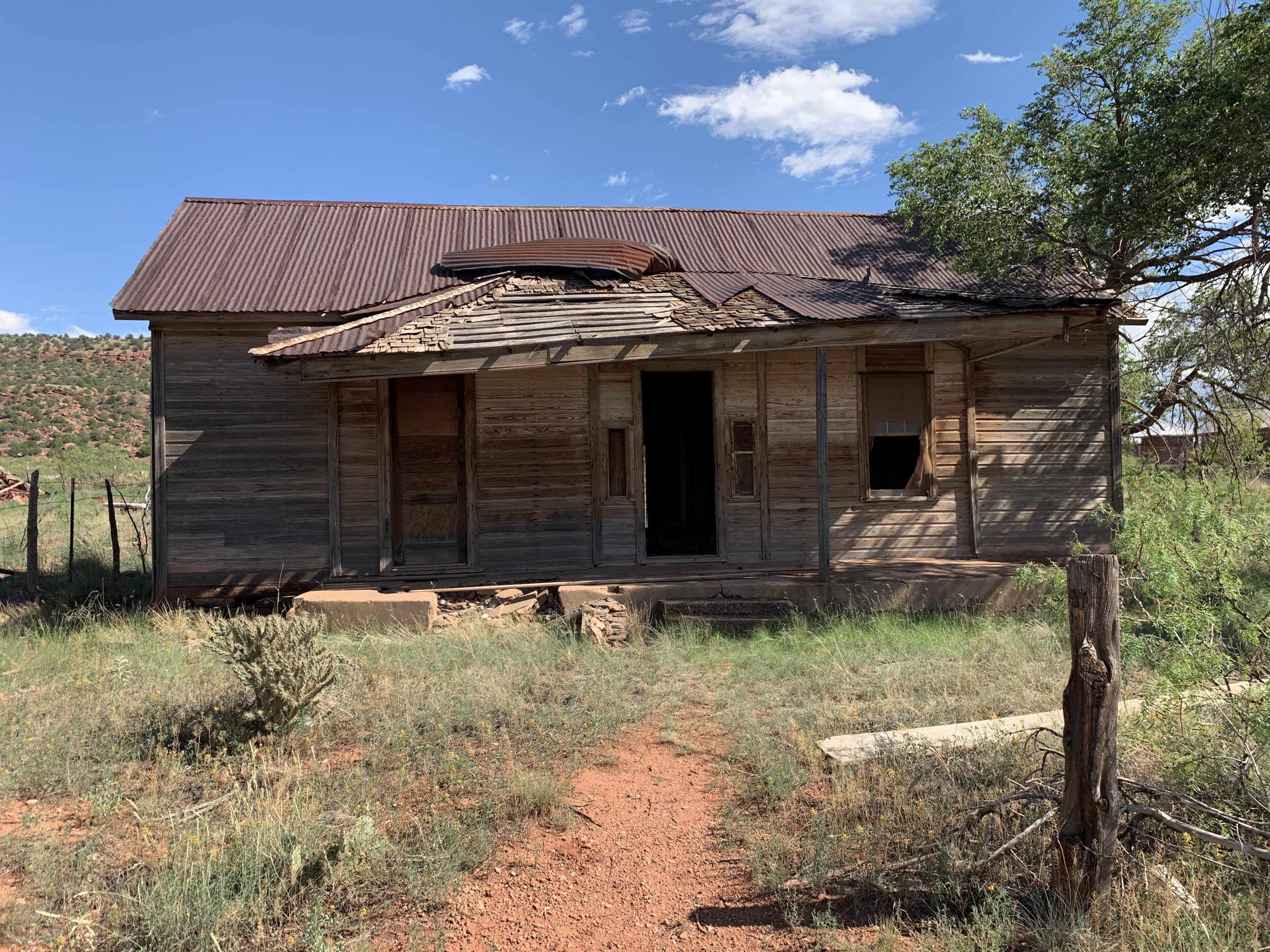
The “least ruined” house
South of I-40, local rumor says the gas station (with no gas) is owned by a long-time resident who runs a tow service out of it and isn’t keen on visitors, as there was a problem with graffiti in some of the ruins at one time. On the North side of the highway sit a few modern buildings and the ruins of Old Cuervo.
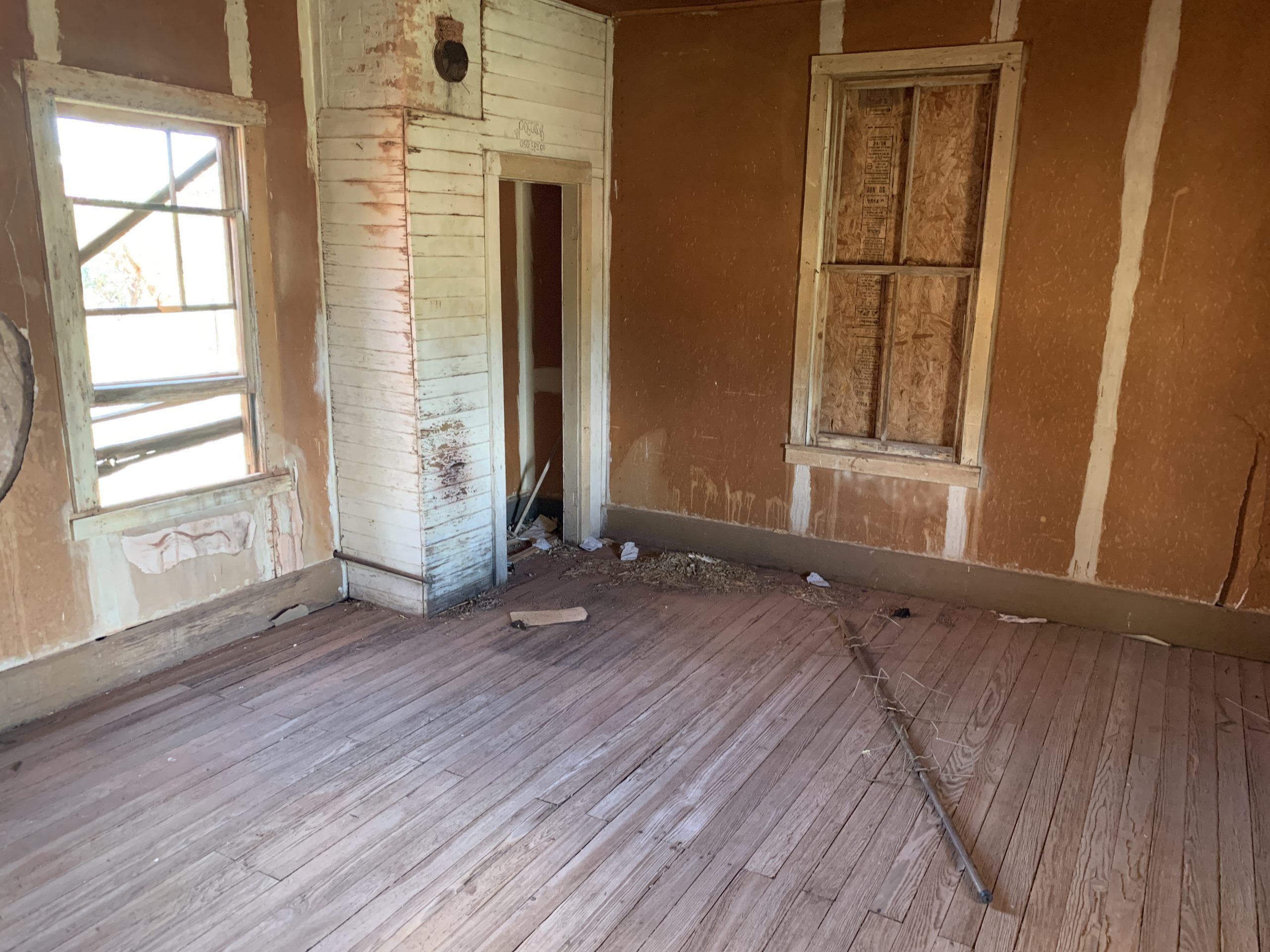
Cuervo was used actively as a trading post as far back as the 1500s- by 1910, the United States opened the area to cattle ranching, and the area grew quickly.
Cuervo had two schools, two churches, two hotels and one post office. At its height in the ‘30s, nearly 300 people lived there, which dropped to under 150 by the mid ‘40s. (There are still people living there now, numbering about 50, and the area is unincorporated).
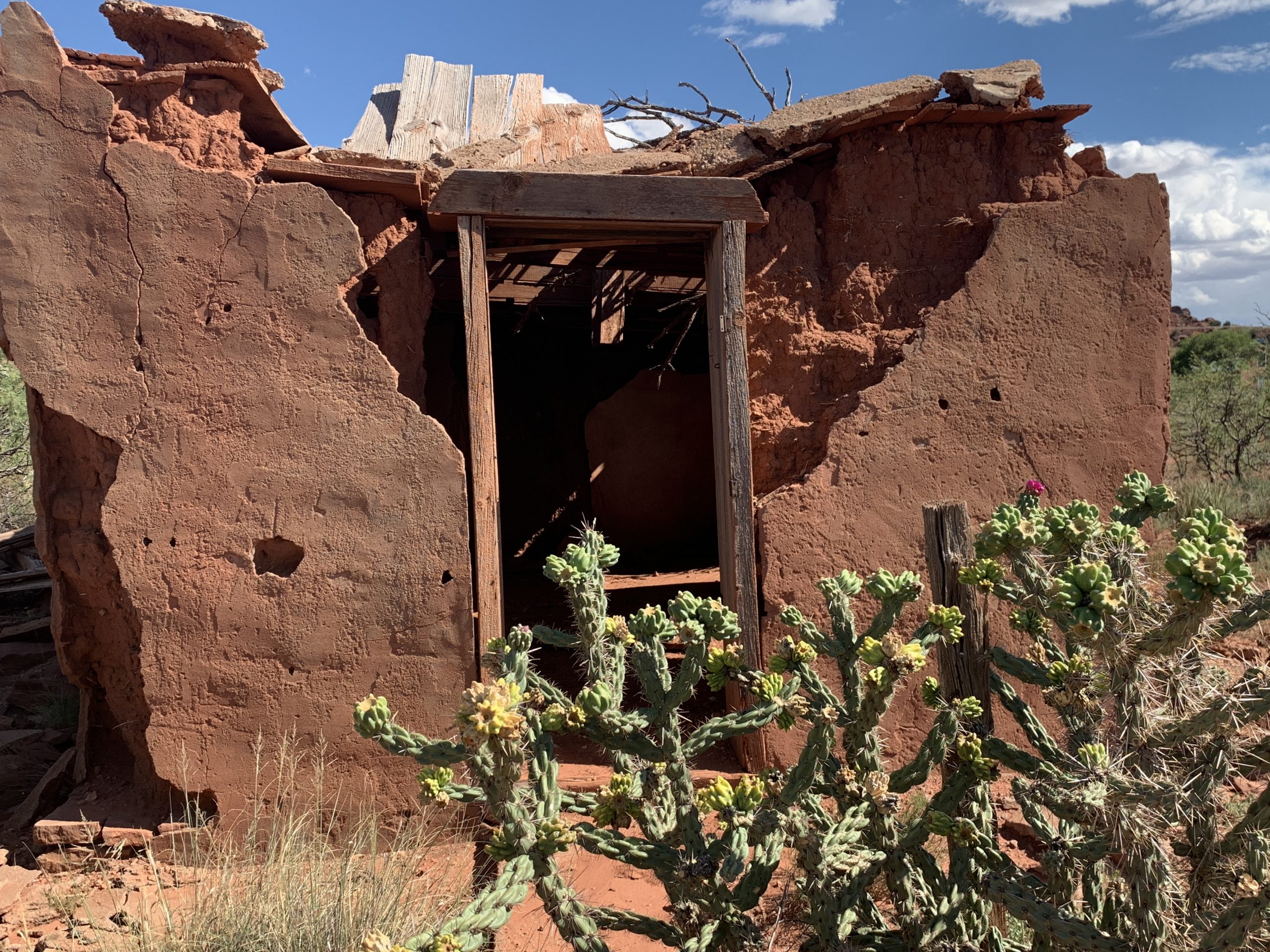
I parked my car and got out into the midday sun. I stopped in front of the church (the first picture in this article), which has been repaired and locked up to keep out vandals. It was erected in 1915, and from the outside, looks ready for service.
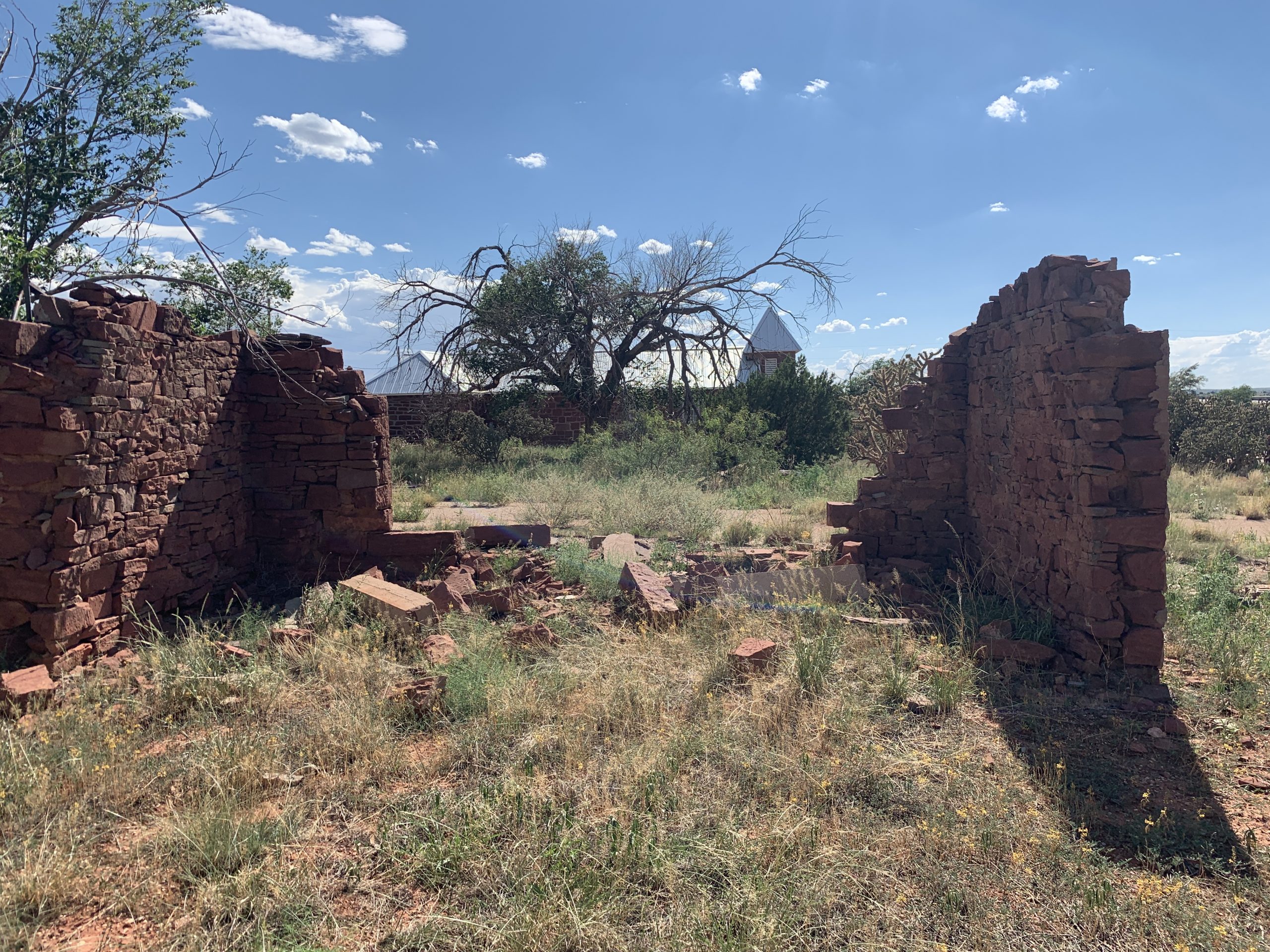
I stood in the quiet and listened. The occasional sound of traffic from the highway would interrupt, and then total silence would fall. There was a slight breeze that did nothing to alleviate the heat of the sun; it was like the hot air blasting out from an oven when you open the door. The rocky dirt under my boots crunched as I walked down the unpaved street and turned a corner. Here I was greeted with structures in various states of decay. The heat was oppressive, yes, but now I was fascinated by the buildings and history. I wandered over to a house of stone and stucco, which still had most of its original four walls, and half a roof.
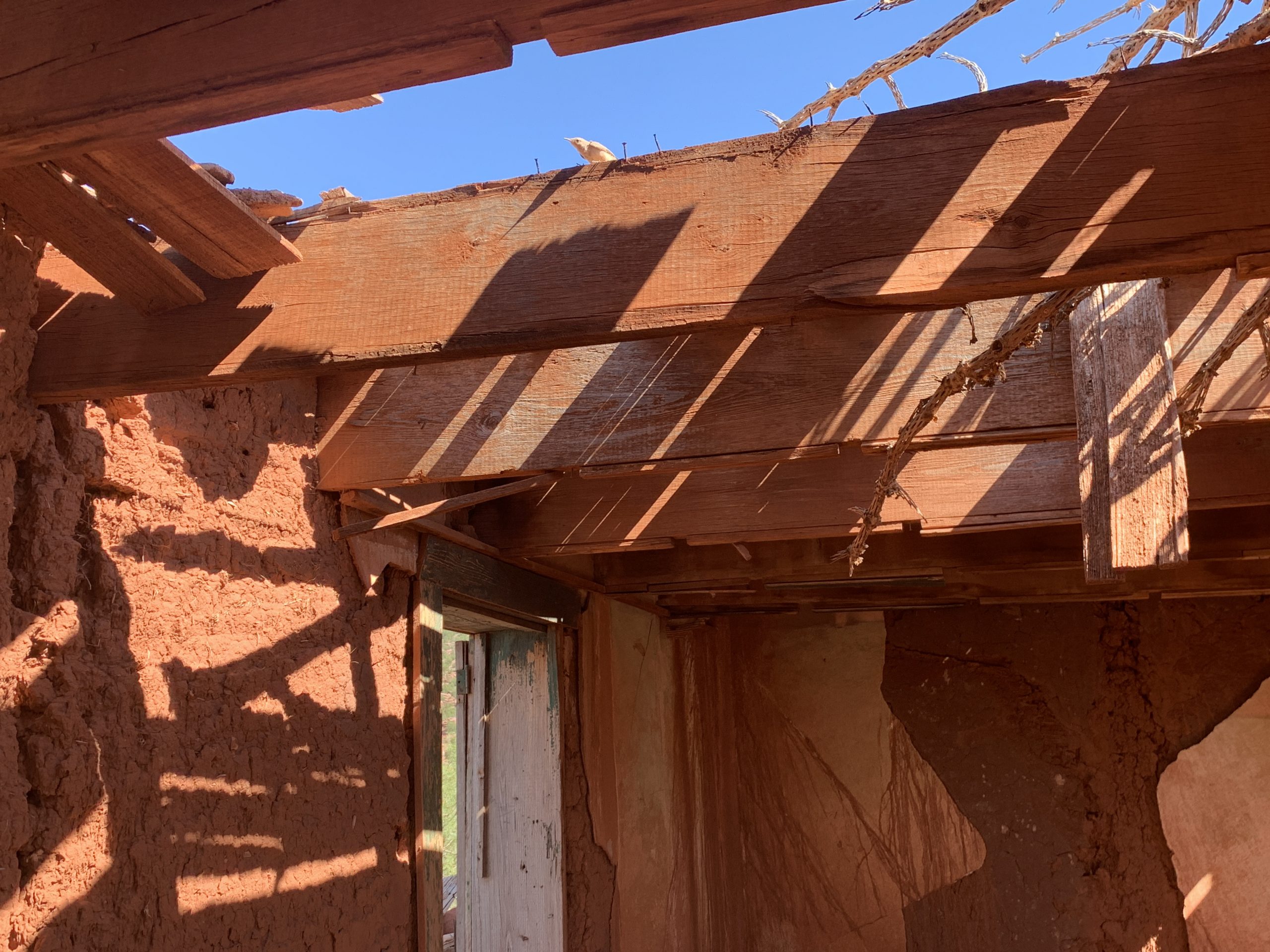
The yellow bird (top center) kept a very close watch on me
I was curious what they looked like from the inside, and very, very carefully, I stepped inside. Several birds swooped past my head, and one bright yellow one perched itself on a hole in the roof and began chirping at me rather insistently. I was pretty sure a family of birds had claimed this house, and so I didn’t linger. I stepped outside, they stopped chirping at me, and peace was restored.
I love old buildings, and Cuervo’s ruins are an interesting mix. I stepped into another home that had four walls, and I was shocked at how cool it was inside. I had been wondering how anyone tolerated living here back then, but they obviously knew what they were doing.
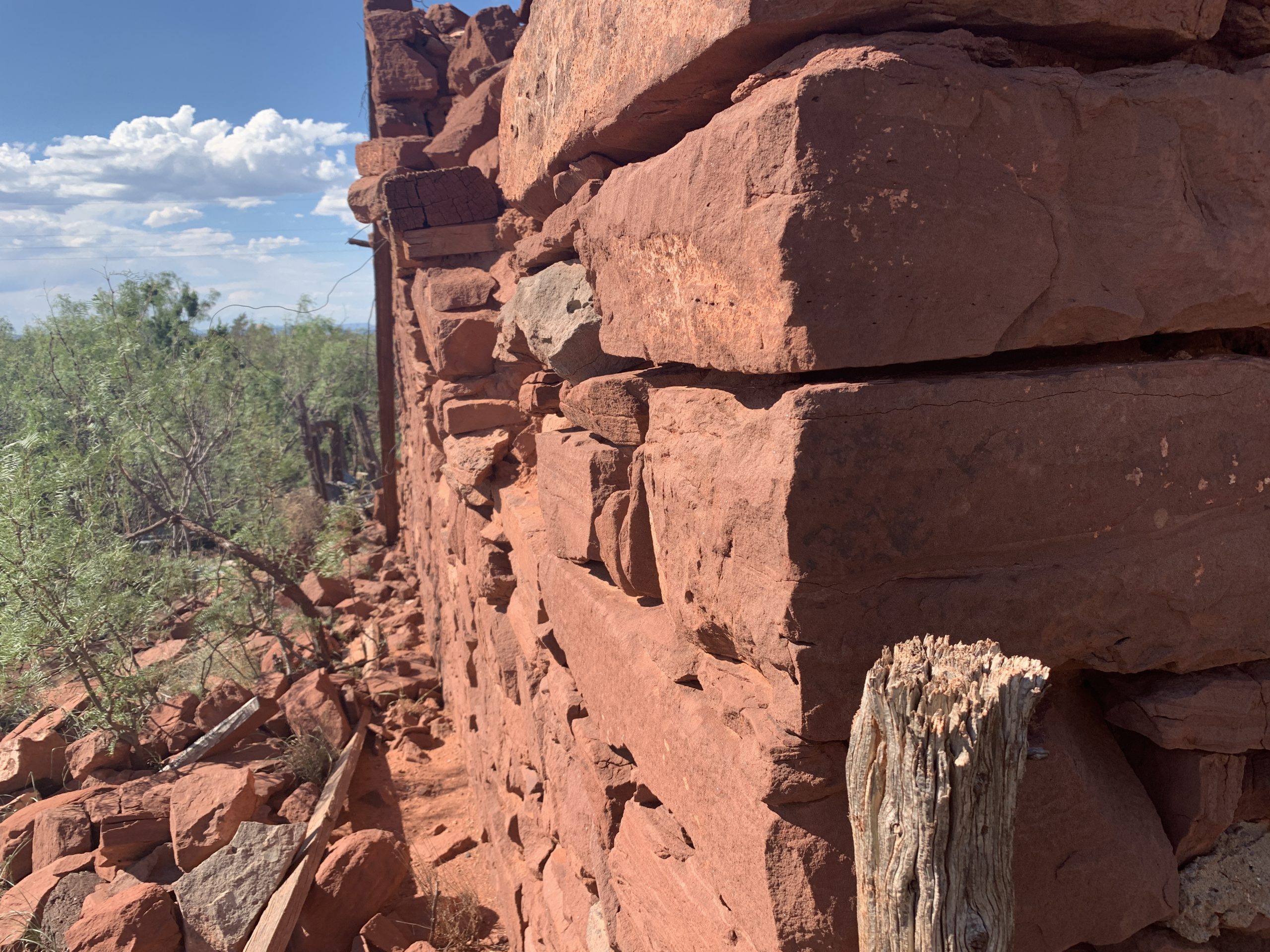
I tried to imagine a steam engine stopping, its stack blowing steam into the sky. Steam Engines needed to stop for water refills along their routes, and Cuervo was a water stop on the Chicago, Little Rock and Pacific Railroad.
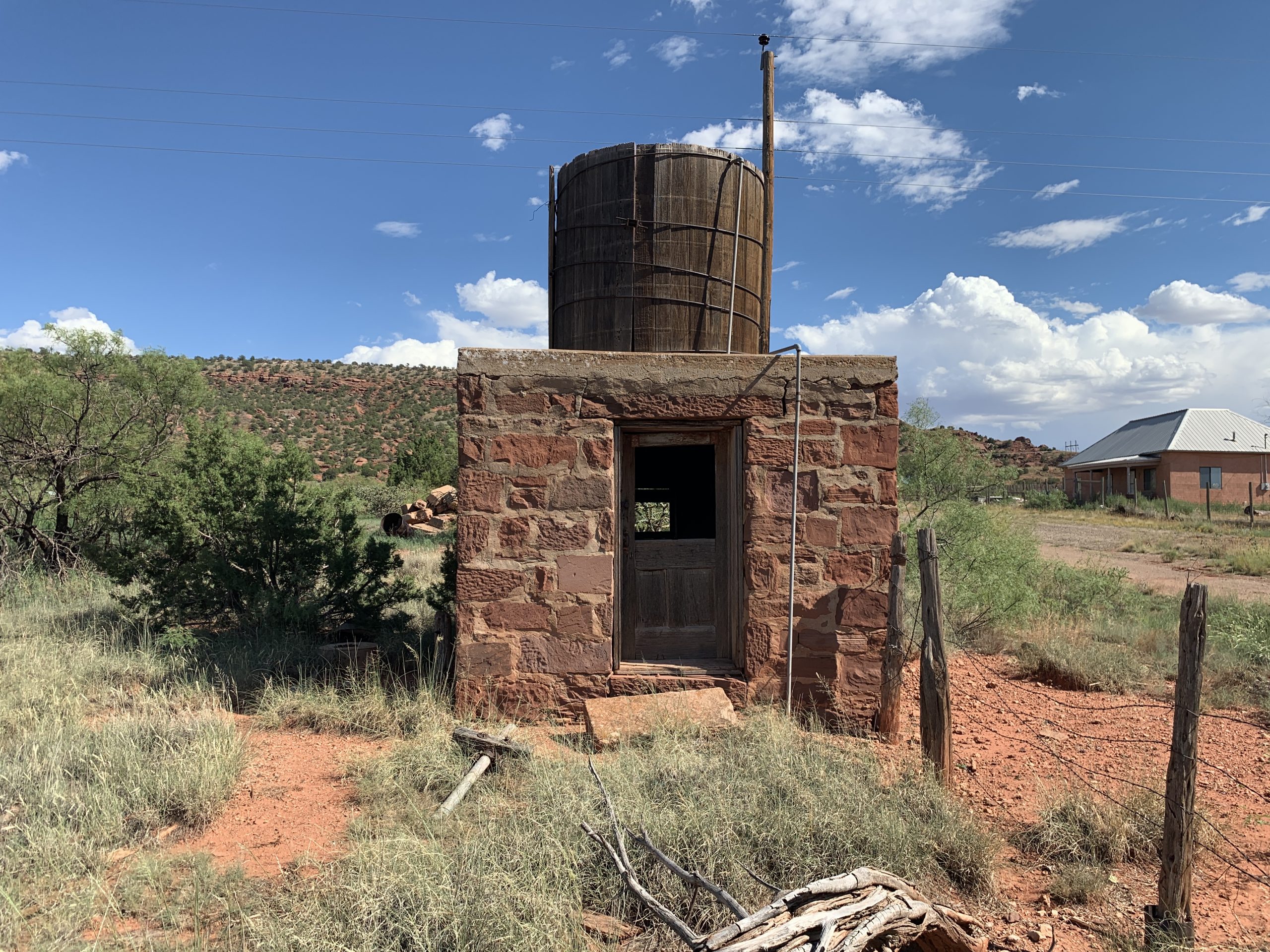
Old Water Tower (note the modern structure off to the right, steps away)
Imagining cattle out on the plains as I walked, I stopped yet again, this time at what used to be an old wooden railroad car that was converted to a gas station, and now is barely standing.
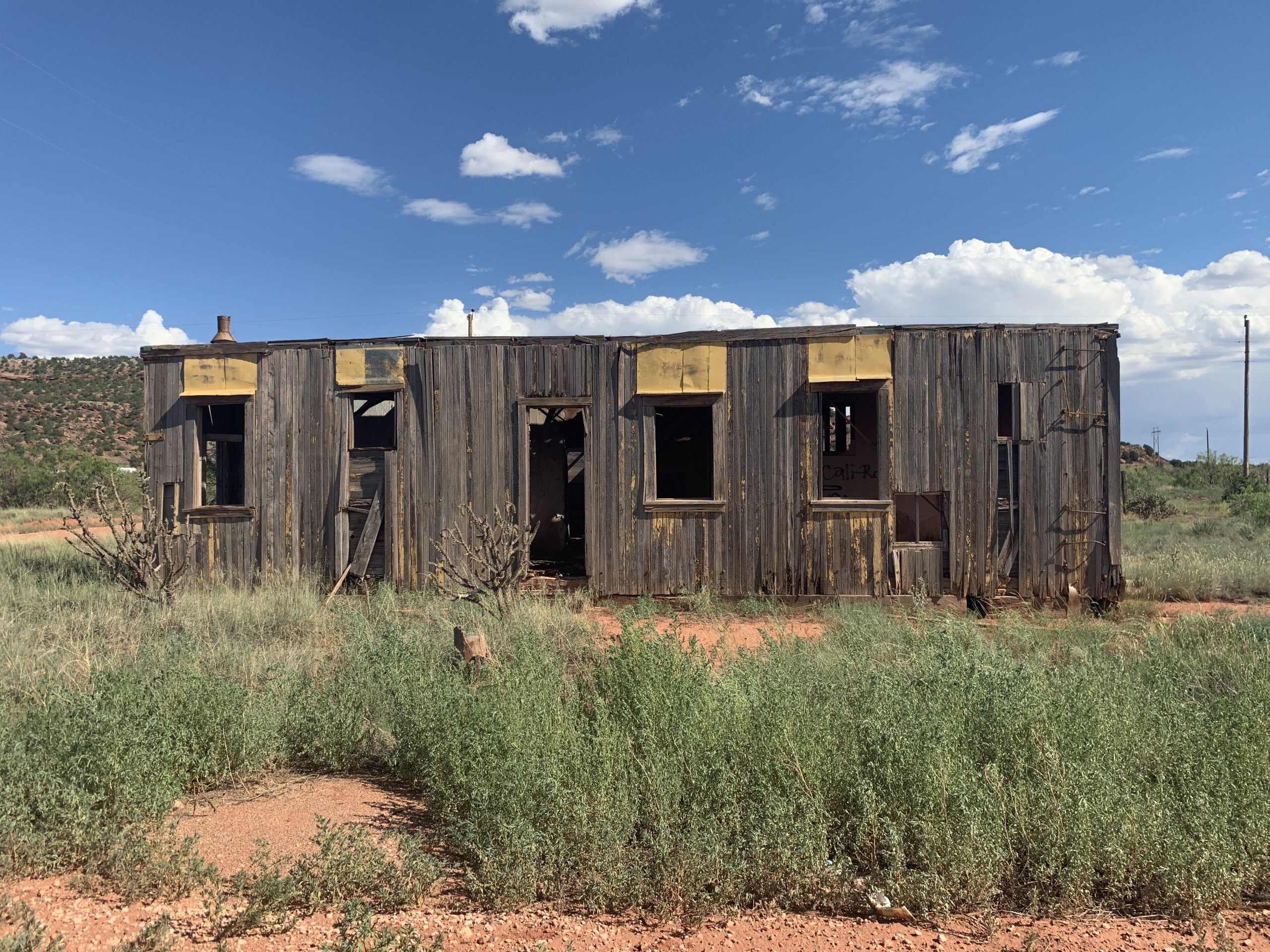
Ancient railroad car, then ancient gas station. Note the remains of a metal ladder (right)
An old stove from the ‘40s greeted me at another ruined home, there were various bits of belongings from over a century of history everywhere, and two cars from different decades slowly being bleached by the sun sat as silent sentinels.
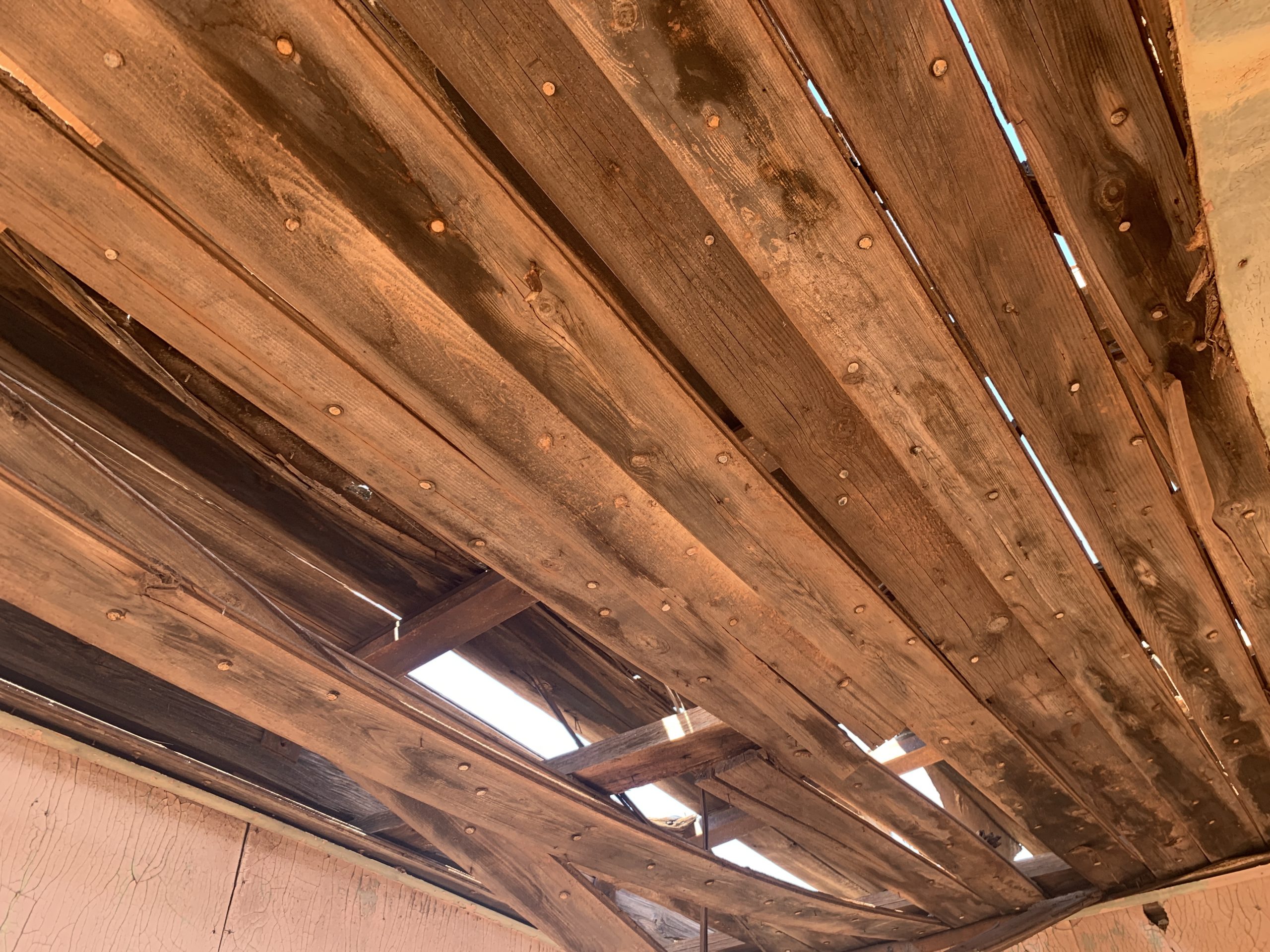
As the whispers of the past washed over me and I kept exploring, I forgot about the heat, kept sticking my head in windows with no glass, and leaned against walls that were built generations ago, thinking about the people who used to live here.
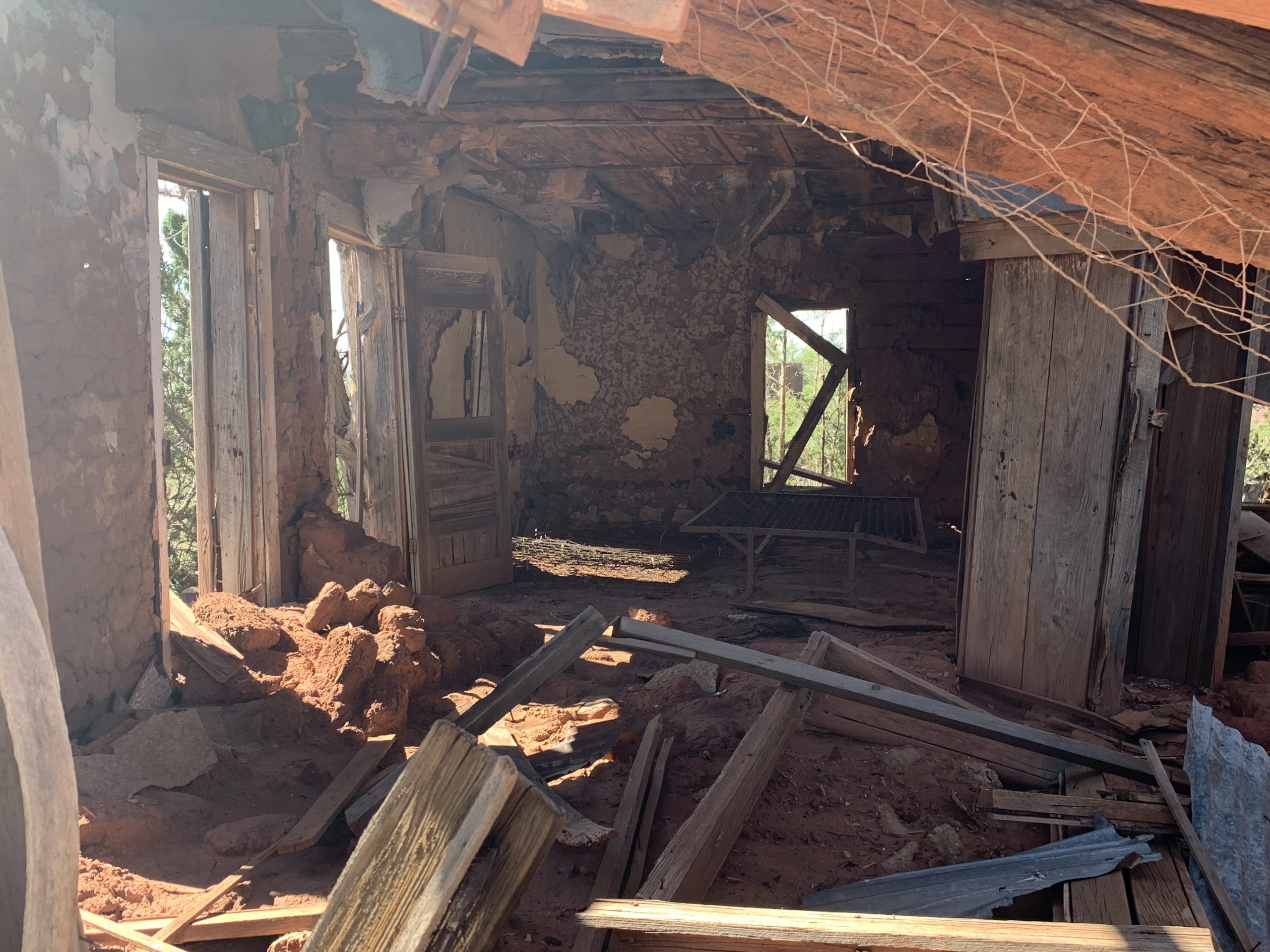
Cuervo is small- some of the buildings are slowly decaying on their own as they have been for a century or more, and a few are privately owned. It was fascinating- Cuervo is not big, not even close, but it is definitely full of history.
I’ll be visiting other New Mexico ghost towns and can’t wait to see the ones that are remote and take some getting to.
Do you have a favorite ghost town you’ve visited in New Mexico I should see? I’d love to hear your recommendations!
